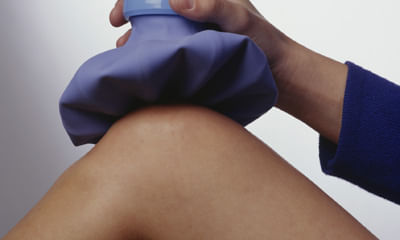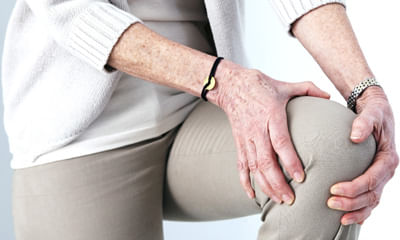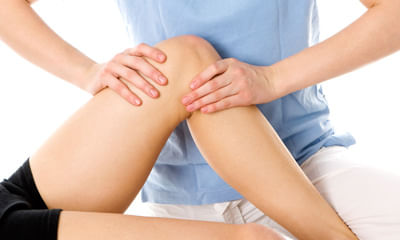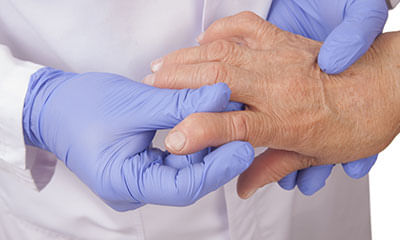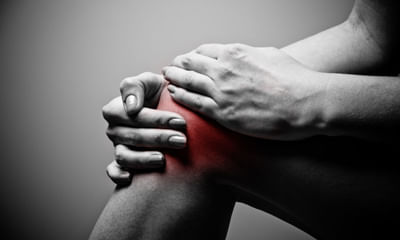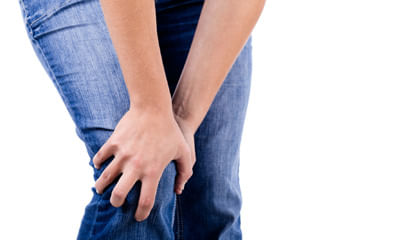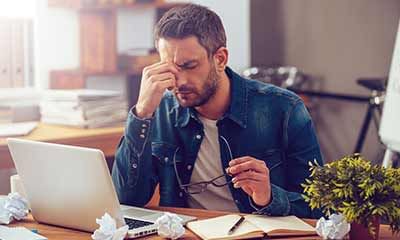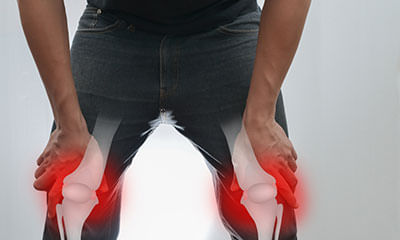Why Do My Knees Crack When I Stand Up
I am 16 year old and when I sit and stand a cracking sound comes from my knees I think it is deficiency of calcium so I ...
Ask Free Question
Hello Lybrate user. Crackling sound in joints are indicative of increased uric acid in blood which eventually leads to arthritis or gout. Lower your protein intake and see a doctor to start with your treatment at the earliest. I would advice you for CBC, R/E Urine, KFT, LFT
My left knee makes cracking sound when I stand up after seating on floor and from yesterday my knee has mild pain while ...
Ask Free Question
Hello, It is quite normal to see such symptoms of joint pain after delivery. Start doing some exercises at home on regular basis with some lifestyle modification that will ease your pain. You can refer me further for more details.
Hello I am 25 year old female. I am suffering from knee pain when I close bend them for 1 to 2 minutes. And my left knee ...
Ask Free Question
Ice therapy would definitely help to reduce the inflammation. We also advise you to use knee cap which would help to prevent the knee from damaging further and also to maintain the quadriceps muscle tone. Stiffness have developed due to weakness of the ligaments & inflamatted cartilage. Specific knee exercises will also help ie. Keeping ball underneath the knee and keep pressing it. That's the simple exerci se which will help you to strengthen the knee a variety of physical therapy techniques can help reduce the symptoms associated with patellar tendinitis, including: strengthening exercises. Weak thigh muscles contribute to the strain on your patellar tendon. Exercises that involve lowering your leg very slowly after extending it can be particularly helpful, as can exercises that strengthen all of the leg muscles in combination, such as a leg press. Half squat (do 2 to 3 sets of 10 repetitions)calf raises (do 2 to 3 sets of 10 repetitions)hamstring curl to do this exercise: 1.Stand facing a wall or use a chair for support. Your feet should be hip-width apart. 2.Lift one foot up, bend your knee, and raise your heel toward the ceiling. Go as far as you can, while keeping your upper body still and hips pointing forward. 3.Hold for 5 to 10 seconds. 4.Relax and lower to the starting position. 5.Do 2 to 3 sets of 10 repetitions for each leg. Leg extensions to do this exercise: 1.Sit up tall in a chair. 2.Put your feet flat on the floor, hip-width apart. 3.Look straight ahead, contract your thigh muscles, and extend one leg as high as possible without raising your buttocks off the chair. 4.Pause, then lower to the starting position. 5.Do 2 to 3 sets of 10 repetitions for each leg. Straight leg raises to do this exercise: 1.For this exercise, you can use a mat to add cushioning under your back. 2.Lie down on the floor with one leg bent and one leg straight out in front of you. 3.Contract the quadricep of your straight leg and slowly raise it up off the floor until it’s the same height as your bent knee. 4.Pause at the top for 5 seconds, then lower to the starting position 5.Do 2 to 3 sets of 10 repetitions for each leg. Side leg raises to do this exercise: 1.Lie on your side with your legs stacked on top of each other. Cradle your head in your hand, and place your other hand on the floor in front of you. 2.Raise your top leg as high as you comfortably can. You should feel this on the side of your hips. 3.Pause briefly at the top, then lower your leg. 4.Do 2 to 3 sets of 10 repetitions for each leg. Prone leg raises to do this exercise: 1.For this exercise, you can use a mat to add cushioning beneath you. 2.Lie on your stomach with your legs straight out behind you. You can let your head rest on your arms. 3.Engage your glute and hamstring muscles in your left leg and lift your leg as high as you comfortably can without causing pain. Be sure to keep your pelvic bones on the floor throughout this exercise. 4.Hold your leg in the lifted position for 5 seconds. 5.Lower your leg, rest for 2 seconds, then repeat. 6.Do 2 to 3 sets of 10 repetitions for each leg. Stretching exercises. Regular, steady stretching exercises can reduce muscle spasm and help lengthen the muscle-tendon unit. Don't bounce during your stretch. Heel and calf stretch to do this stretch: 1.Stand facing a wall. 2.Place your hands on the wall and move one foot back as far as you can comfortably. Toes on both feet should be facing forward, heels flat, with a slight bend in your knees. 3.Lean into the stretch and hold for 30 seconds. You should feel the stretch in your back leg. 4.Change legs and repeat. 5.Do this stretch twice for both legs. Quadriceps stretch to do this stretch: 1.Stand next to a wall or use a chair for support. Your feet should be shoulder-width apart. 2.Bend one knee so your foot goes up toward your glutes. 3.Grab your ankle and gently pull it toward your glutes as far as you can comfortably. 4.Hold for 30 seconds. 5.Return to the starting position and change legs. 6.Repeat 2 times on each side. Hamstring stretch to do this stretch: 1.For this stretch, you can use a mat to add cushioning under your back. 2.Lie down on the floor or mat and straighten both legs. Or, if it’s more comfortable, you can bend both knees with your feet flat on the floor. 3.Lift one leg off the floor. 4.Place your hands behind your thigh, but below the knee, and gently pull your knee toward your chest until you feel a slight stretch. This shouldn’t be painful. 5.Hold for 30 seconds. 6.Lower and change legs. 7.Repeat 2 times on each side.
Why my knees too much crack and pop during sit and stand? There is no pain but too much cracking and popping. I want to ...
Ask Free Question
The clicking and popping may be caused by catching on soft tissue or scar tissue within the knee. This kind of popping is often a sign that you have a meniscus tear or that a small piece of loose cartilage is caught in the knee. You would most likely feel this kind of popping pain come and go. Lets discuss you concern in detail so that we can help you with best possible medical plan.
My aunty have a knee problem, when she sit and try to stand up she have pain on her knees please help. She's now 45 year ...
Ask Free Question
Pain in knee after 45 can because of degenerative changes in cartilage of knee. Signs are increase in pain while stair climbing, cross leg sitting, squatting, cracks in knee while bending or extension. All degenerative changes increases with age so I you have to prevent it for further damage of cartilage. I would suggest you following 1. Avoid squatting, cross leg sitting, stair climbing 2. Hot water fomentation three time daily for knee 3. Massage with olive oil twice daily on affected knee 4. Simple oa knee exercise basic (search on you tube) note: donât do any exercise which increases pain if pain still persists please contact nearest physical therapy clinic. Have patience and stay positive is key for getting relief.
Hi dear doctors my mother suffering from knees pain due to arthritis and both knees are wear out so I want to know the b ...
Ask Free Question
Pain in knee due to arthritis is because of degenerative changes in cartilage of knee. Signs are increase in pain while stair climbing, cross leg sitting, squatting, cracks in knee while bending or extension. All degenerative changes increases with age so I you have to prevent it for further damage of cartilage. I would suggest you following 1. Avoid squatting, cross leg sitting, stair climbing 2. Hot water fomentation three time daily for knee 3. Massage with olive oil twice daily on affected knee 4. Simple oa knee exercise basic (search on you tube) note: don't do any exercise which increases pain. Here are some exercises from my side a) exercises to improve your balance: 1. Balance on each leg in turn, barefoot, trying to hold your balance for as long as possible; 2-3 times a day; 2. Standing on one leg, go up and down on your toes slowly 3-5 times. Do more sets on the right leg. 3. Stand on one leg, and lift the other sideways 3-5 times, with full control. Repeat about 5 times on each side. You probably need to use a chair-back to steady yourself at first, but try not to hold on. B) exercises to improve your knee mobility: try to do the patellar mobilizing (pressing the kneecap to each side with the knee straight and relaxed) before you do these: 1. Lie on your stomach and bend one knee; press it gently further back, using the other leg. Hold the bent position for a count of 3, then relax. (do not force this movement at all, as the muscles won't hold the stretch if you do) repeat 3-5 times, as often as possible each day, doing more reps for the right leg. If lying on your stomach cause knee pain, place a folded towel under your thigh to lift the knee clear. 2. Sitting on an upright chair, with your knees bent to a right angle: keep you heel on the floor and turn your foot inwards and outwards gently, 3-5 times, as often as possible. Mainly for the right leg, but also the left. 3. In the bath or in a swimming pool, gently bend and straighten your knee as much as possible, without forcing the movement. C) exercises to improve your hip range and strength: 1. Lie on one side and lift the uppermost leg vertically, keeping the knee locked straight. Repeat 10 times on each side. 2. If you can, do the side-raise exercise: lie on one side and rest on your elbow so that your shoulder is lifted off the floor/bed. Lift your hips up vertically to balance on your elbow and outer side of your foot, keeping your body and legs straight. Repeat 3 times each side. 3. Lying on your back, lift one leg and describe circles in the air, keeping your knee locked straight. Repeat three times on each leg. 4. Sitting on the floor, put the soles of your feet together and try to press your knees downwards gently with your forearms. You may well have done this exercise in yoga. Repeat 3 times. If pain still persists please contact nearest physical therapy clinic. Have patience and stay positive is key for getting relief.
I am male, 52 yr, 62 kg, non smoker. Practice exercises regularly. Suddenly I started to feel knee pain in both legs. No ...
Ask Free Question
Ice therapy would definitely help to reduce the inflammation. We also advise you to use knee cap which would help to prevent the knee from damaging further and also to maintain the quadriceps muscle tone. Stiffness might have developed due to weakness of the ligaments & inflammed cartilage. Specific knee exercises will also help ie. Keeping ball underneath the knee and keep pressing it. That's the simple exercise which will help you to strengthen the knee.
On tapping left foot on floor I feel pain around my knee. On standing I feel as if my legs don't have energy to stand. O ...
Ask Free Question
Check Vitamin D3 level Crackling sound is normal in some people if You are having weakness you need to do quadriceps exercises.
My vit b12 is 269 pg/ml 25oh vit d is 11.34 ng/ml Cracking sound in bones, fatigue, pain in head in left right and back. ...
Ask Free Question
This is a general low back ache and for this you can follow these measures: one keep a pillow right under the knee while sleeping, next is you can keep ice in the painful area for about 5--10 minutes, if pain still persists you can stretch your body by twisting the waist on both sides how we used to do in the school drill similarly you can try which will help you relax as well will reduce the pain. It looks like you are anaemic. If you have back pain after you sit for long hours then it is due to your haemoglobin levels as it is important to check that. Anaemia always leads to the symptoms of being tired and also having back / leg pain though there may not be any pathological reasons for back pain. •Standing hamstring stretch: Place the heel of your injured leg on a stool about 15 inches high. Keep your knee straight. Lean forward, bending at the hips until you feel a mild stretch in the back of your thigh. Make sure you do not roll your shoulders and bend at the waist when doing this or you will stretch your lower back instead of your leg. Hold the stretch for 15 to 30 seconds. Repeat 3 times. •Cat and camel: Get down on your hands and knees. Let your stomach sag, allowing your back to curve downward. Hold this position for 5 seconds. Then arch your back and hold for 5 seconds. Do 3 sets of 10. •Quadruped arm/leg raise: Get down on your hands and knees. Tighten your abdominal muscles to stiffen your spine. While keeping your abdominals tight, raise one arm and the opposite leg away from you. Hold this position for 5 seconds. Lower your arm and leg slowly and alternate sides. Do this 10 times on each side.•Pelvic tilt: Lie on your back with your knees bent and your feet flat on the floor. Tighten your abdominal muscles and push your lower back into the floor. Hold this position for 5 seconds, then relax. Do 3 sets of 10. •Partial curl: Lie on your back with your knees bent and your feet flat on the floor. Tighten your stomach muscles. Tuck your chin to your chest. With your hands stretched out in front of you, curl your upper body forward until your shoulders clear the floor. Hold this position for 3 seconds. Don't hold your breath. It helps to breathe out as you lift your shoulders up. Relax. Repeat 10 times. Build to 3 sets of 10. To challenge yourself, clasp your hands behind your head and keep your elbows out to the side. •Gluteal stretch: Lying on your back with both knees bent, rest the ankle of one leg over the knee of your other leg. Grasp the thigh of the bottom leg and pull that knee toward your chest. You will feel a stretch along the buttocks and possibly along the outside of your hip on the top leg. Hold this for 15 to 30 seconds. Repeat 3 times. •Extension exercise: Lie face down on the floor for 5 minutes. If this hurts too much, lie face down with a pillow under your stomach. This should relieve your leg or back pain. When you can lie on your stomach for 5 minutes without a pillow, then you can continue with the rest of this exercise.
Is bonmax pth injunction good for fixing multiple crack in right lower leg? Age of 25? ...
Ask Free Question
Leg PainIf you have leg pain then you have to rule out the casues for having leg pain. First of all check your weight and your haemoglobin levels, as Anaemia always leads to the symptoms of being tired and also having leg pain though there are no issues with the knee joint or back pain. If not if the pain radiates down the back of thigh and legs then it might be due to sciatica. Kindly consult the nearby physiotherapist. Hope you recover soon from the leg pain. Pain in the back while walking and standing Pain in the right legIf you have leg pain please check your body weight and your hemoglobin levels, as Anemia always leads to the symptoms of being tired and also having leg pain though there may not be any pathological reasons for back pain. My suggestion would be to wear MCR Chapels which will help you to prevent the weight falling on the If you have back pain while walking and standing first of all check your weight and your hemoglobin levels, as Anemia always leads to the symptoms of being tired and also having back pain though there may not be any pathological reasons for back pain. My suggestion would be to wear MCR Chapels which will help you to prevent the weight falling on the back. And also should check whether you have flat foot on the right leg that also might be the reason to have pain in one particular leg Pain in the left side of the leg/thighThe compression of the sciatic nerve should be around the right side that's the reason you have pain in the left side. That's the reason you cannot sit or stand and it is exactly around the L5 vertebrae where the sciatic nerve passes by.

